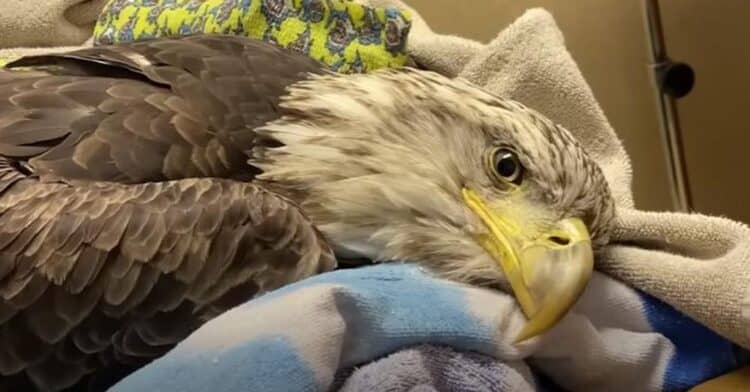As beloved family members, most pet owners strive to secure the best possible care over their companion animal’s lifetime, from preventative wellness to critical medical interventions, as health eventually declines in aging pets. However, escalating veterinary costs threaten this obligation without proper financial planning. Herein emerges the immense protective purpose of pet insurance – financially safeguarding a pet’s healthcare needs despite unpredictable illness or traumatic injuries befalling pets over time as a safety net preserving their cherished longevity and wellness.
Key Benefits Pet Insurance Provides
Beyond profoundly sentimental motivations protecting pets by any means necessary, pet insurance also furnishes wholly practical financial protections, including:
- Diminished Financial Shock of Traumatic Events—Accidents inducing emergency surgeries, toxin ingestions provoking ICU hospitalizations, or cancer necessitating chemotherapy easily reach £ 4,000+ appable events without preemptive plans mitigating budget impact. This prevents fully tapped savings and credit cards stressing regular monthly finances.
- Funding for Top-Quality Veterinary Care—Insured pets enjoy access to optimal treatments from revered specialists without decisions being dictated by money, simply medicine and ethics. Transporting pets to renowned veterinary school hospitals hundreds of miles away even becomes feasible, protected by sufficient coverage maximums.
- Faster Diagnosis and Intervention—Knowing costs remain partially defrayed by forthcoming claim reimbursements allows moving rapidly into diagnostic testing, scans, medication trials, and even exploratory procedures, which provide symptom relief and definitive condition clarity, rather than hesitating on approvals, dragging out suffering and declines. This leads to better prognoses through earlier informed treatment.
- Overall Diminished Stress and Worry – With financial preemptions secured, pet parents avoid compounding emotional duress from managing unexpected vet costs atop normal grief and concern over beloved pets falling critically ill, injured from accidents, or requiring major surgery. Removing money pressures grants mental bandwidth, focusing on recovery encouragement and optimism.
Pet insurance lifts the monetary burden by sharing much of the exponentially high healthcare costs, challenging devoted pet owners dedicated to pursuing possible medical options supporting their treasured animal’s enriched lives when traumatic events transpire. Policies convert devastating shock into managed transitions.
Understanding the Key Types of UK Pet Insurance Plans
While all pet insurance platforms essentially function as described above, notable plan differences influence premium fees and claim reimbursement scope.
Lifetime Cover Pet Insurance
Ideal “set it and forget it” lifetime pet policies ultimately establish coverage spanning a pet’s entire lifespan up to £8,000 total claims. This rejects annual limits resetting regardless of ongoing conditions. Once secured, renewing payments maintains a safety net without requalifications. Most preexisting conditions simply remain excluded.
Maximum Benefit Pet Insurance
Capping total claims up to £4,000, these affordable plans allow peace of mind for multiple years until payouts exceed the capped limit. Ideal for lower-risk pets without serious preexisting illness, Maximum Benefit plans furnish financial security blankets matching average vet costs for common injuries, illnesses, and accidents befalling pets at fractions of premiums compared to unlimited lifetime options. Annual payments cease once benefit limits hit over a pet’s lifetime.
Accident Only Pet Insurance
Inclusive strictly of unforeseeable traumatic incidents like vehicle collisions, venomous snake bites, or violent altercations with wildlife randomly afflicting pets, Accident Only insurance costs less than half of standard premiums, merely protecting against mishaps absent illness coverage. Purely covering broken bones, lacerations, and similar accidental injuries lowers monthly premiums, staying insured against emergency veterinary crises costing thousands following freak accidents.
Key Coverage Considerations Impacting Premiums and Payouts
While comparing leading providers quoting multiple policy options amounts, focus comparisons across these key variables swaying premium costs and claims process advantages over a pet’s lifetime after enrollment.
Annual Payout Limits
Capped allowances between £1,000 £8,000 yearly determine the maximum claimable amounts for ongoing treatment like chemotherapy, radiation therapy, or medications for chronic illnesses. Higher ceilings provide better protection for pets needing extensive interventions over years.
Coverage Percentage
Plans reimbursing either 80%, 70%, or 50% of eligible vet bill invoices filed post-care allow pet owners to determine their comfortable upfront out-of-pocket liability for the remaining 20%- 50% balance, further balancing premium rates paid.
Deductibles
Annual deductibles ranging from £60 to upwards of £200+ dictate the client’s cash portion owed on veterinary services before the insurance provider contributes claims reimbursement payments towards the remainder of invoices. Elect higher deductibles to decrease monthly premiums or minimize frequent small outlays with lower deductibles to raise regular installments to balance costs long term.
Exclusions
Similar to human health insurance, pet policies enumerate excluded pre-existing diagnosed conditions preceding enrollment or active within an initial waiting period spanning from 72 hours up to two weeks post-sign-up along with standard exemptions like elective cosmetic procedures ineligible for claims. Review all documentation thoroughly and understand exclusions. Kennel cough, dermatitis, and urinary tract infections often remain uncovered as common pre-existing issues in rescued adopted pets, requiring awareness.
Pricing ultimately gets determined by calculating species risk groups, current age, location, and maximum annual payout specifications. Once secured after underwriting approval verifying disclosed medical history, maintaining premium payments preserves the possibility of reimbursements later when catastrophic events strike after notice periods expire for previously undeclared conditions.
Streamlining the Claims Process Successfully
When immersed amid taxing injuries or scary new illnesses diagnosed in a beloved pet, knowing how to submit and track claims efficiently prevents added frustrations for already concerned pet parents. By proactively taking several key steps, pet owners secure the best possible reimbursement experience when funds feel needed most:
- Keep All Invoices—Carefully store away detailed payment invoices containing pet medical records or microchip ID numbers, diagnosis descriptors from attending veterinarians, mournful descriptions of administered medications or treatments, plus dates and itemized costs for everything rendered during the visit.
- Submit Claims Quickly – After paying all veterinary expenses in full directly to the animal hospital or clinic at the time of checkout, promptly complete claim forms via online portals or printed documents enclosed with invoices for fastest processing, avoiding any delays stemming from incomplete claim packets lacking veterinary details. Most claim submissions validate rapidly when tendered accurately with full, supportive paperwork from pet healthcare providers.
- Understand the Policy – Avoid unwelcome claim rejection surprises by thoroughly knowing your personal policy terms for waiting periods regarding pre-existing exclusions, reimbursement rates, annual caps, and any limitations around breeds, hereditary conditions, or maximum ages limiting extended payouts. What qualifies under accident vs. illness plans also varies regarding covered events. Know the policy contract explicitly.
While navigating veterinary challenges with beloved family pets often emotionally and financially strains limited budgets, the difference between having versus not having pet insurance furnishes when crisis strikes remains significant regarding minimizing turmoil and access to care decisions influencing cherished pets’ wellness and continuity of enriched presence in our daily lives. As pet insurance providers continue to improve premium affordability and convenient claims processes, adequate coverage suits more pet owners’ budgets and lifestyles, and they need emotional and financial security against unexpected veterinary costs that jeopardize treasured pets’ lifetime care needs.
Lead Image by Helena Lopes on Unsplash.







Leave a Reply